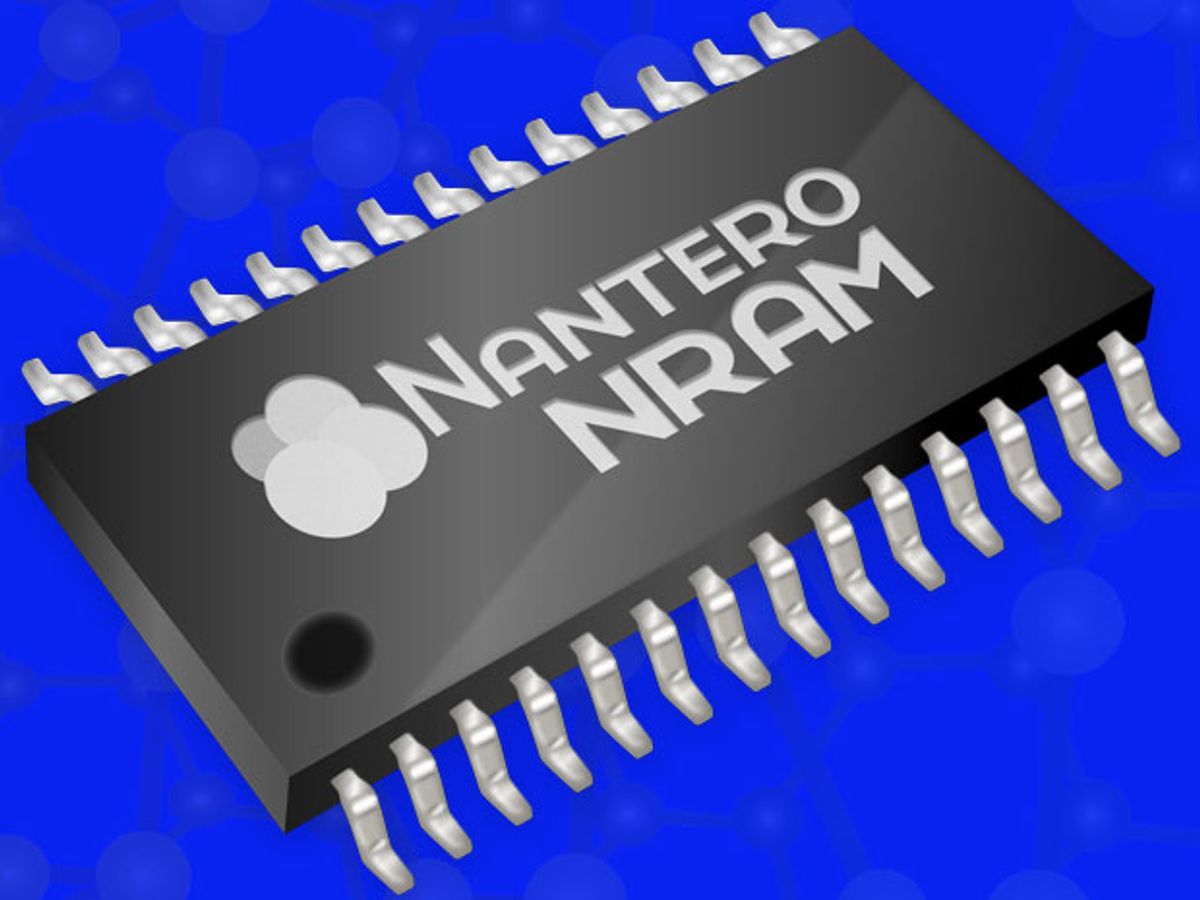The long and twisting road for Nantero in its efforts to bring a radically new memory device to market serves as a kind of lesson in perseverance and a microcosm of nanotechnology’s commercial development. The latest news for Nantero is that it has received $31.5 million to continue its now seemingly quixotic quest to bring its carbon nanotube-based non-volatile random access memory device (NRAM) to market.
Back in 2002, Nantero announced to the world that it would bring its groundbreaking NRAM technology to market within two years. By the time the company got into IEEE Spectrum’s “Winner’s and Loser’s” column six years later, it appeared that even if the company did get its product to market, technology had moved on.
But Nantero—like many nanotech start-ups attempting to transform the market their technology is aimed at—managed to keep the wheels spinning by doing contract research primarily for the U.S. government. That lifeline seemed to be thrown off as well when Nantero sold that business unit to Lockheed Martin in 2008.
While this appeared to be the final fate for Nantero—being sold off to a big company—Greg Schmergel, Nantero's co-founder and CEO, remained undeterred, vowing that the sale of this business unit would allow the company to continue its “strategic focus to achieve our goals in the commercial memory space."
The next piece of big news for Nantero came four years later when the company announced a joint-development agreement with the Belgium-based electronics powerhouse Imec to develop Nantero’s carbon-nanotube-based memory.
“After review of the progress to date by Nantero and its manufacturing partners, we decided that this CNT-based non-volatile memory has multiple very attractive characteristics for next-generation highly scaled memory,” said Luc Van den hove, CEO of Imec at the time of the announcement in 2012.
Of course, it must have been encouraging for the company and its investors that an organization like Imec would heap such praise on the technology. But more importantly, Imec seemed to be able to provide the R&D infrastructure that promised to move NRAM beyond mere promise to commercial products.
This brings us to now—three years after the Imec announcement—and a new cash infusion, which represents part of the company’s fifth round of funding, which brings the total to $78 million. The main contributors are many of the same venture capital funds that supported its initial rounds.
Of course, a company and its investors can’t keep going for over 13 years on capital investment funds alone. The contract research surely helped, and Nantero also generated over $50 million in revenue by licensing its patents and technology.
So what is the strategy for finally bringing NRAM to market? It appears that Nantero has abandoned hope of directly supplying computer makers with their memory chips and instead is looking to license the technology to the chip manufacturers, according to a Wall Street Journal (WSJ) article.
As Peter Dobson of Oxford University, and founder of now defunct Oxford Biosensors, once offered: getting a licensing deal for a disruptive technology is far from a sure thing.
It all seems to come back to the notion I suggested back in Spectrum’s Winner and Loser’s piece seven years ago: “It is competing with large companies. Samsung, for instance, has created a $4-billion market for themselves with flash memory. Do you think they are going to idly sit by while some start-up says they are going to make that business obsolete?”
With the WSJ pointing out that no clear timetable has been set for the commercial launch of Nantero’s product, it would seem that the holding pattern we have experienced for over a decade will continue.
Dexter Johnson is a contributing editor at IEEE Spectrum, with a focus on nanotechnology.



